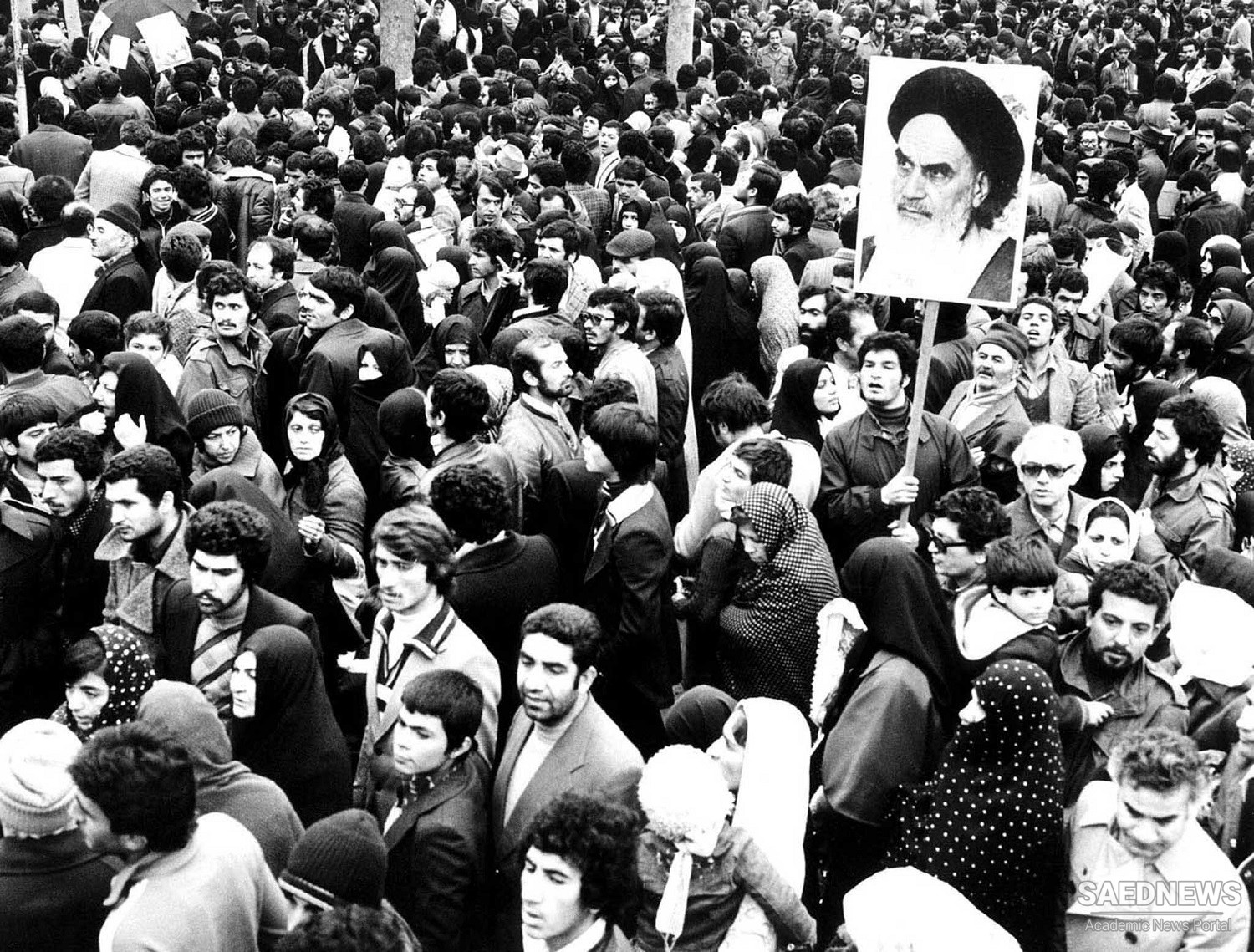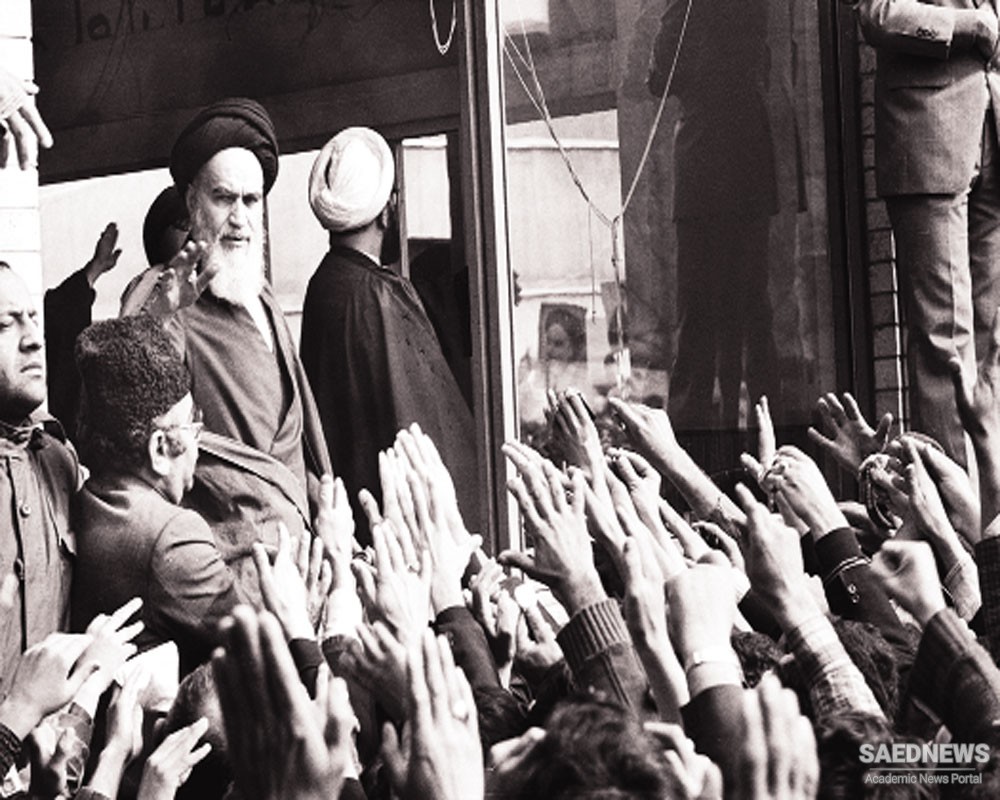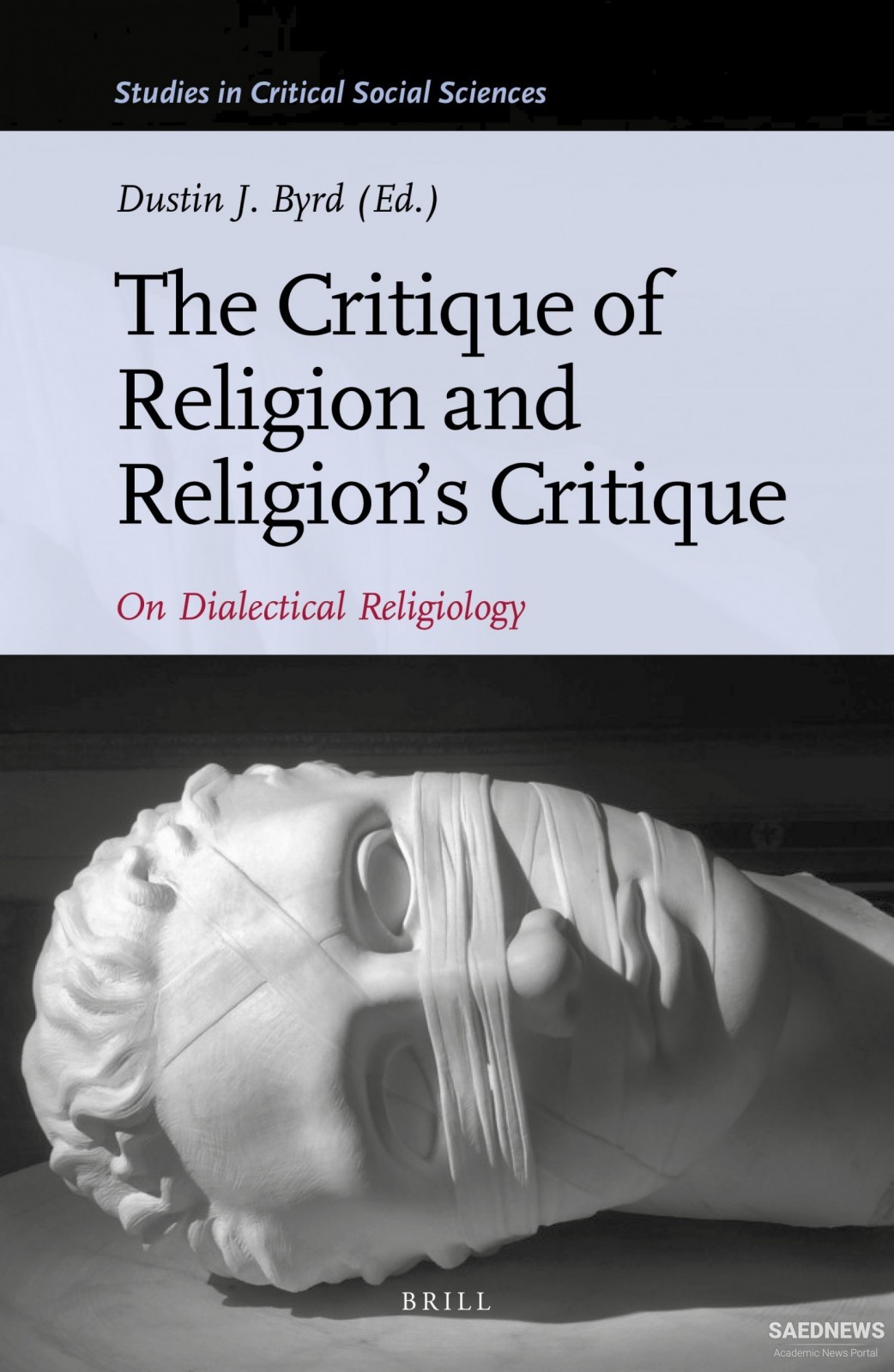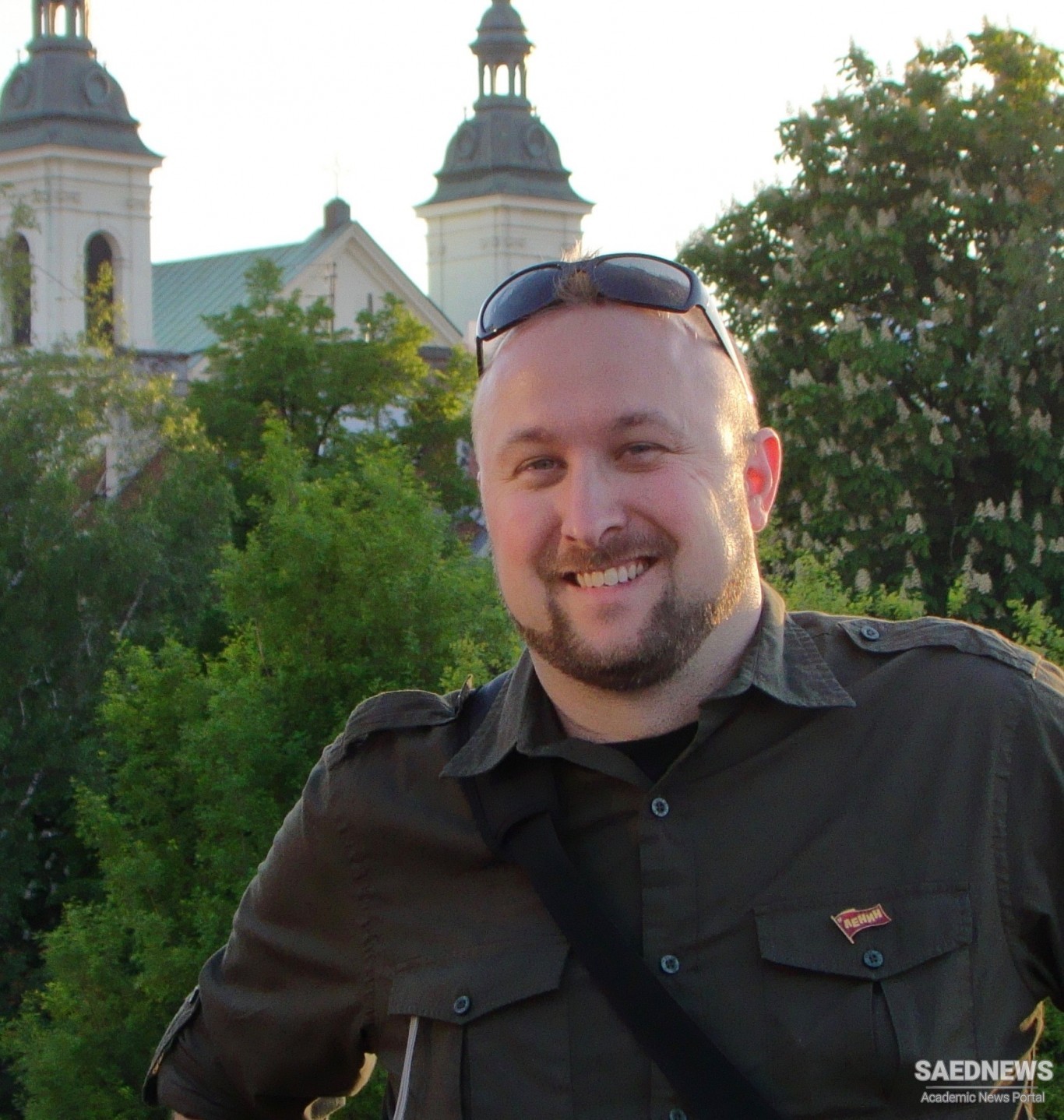Islamic Revolution of Iran prevailed on Feburary 10, 1979, after several years of mass demonstrations and unrest that led to the martyrdom of thousands of Iranian citizens who denied despotism and anti-Islamic values. Iranian society had reached a decision, a vital one indeed, to oust its self-alienated ruler who didn't care about his people and nation, let alone the traditions, values and beliefs. Mohammad Reza Shah Pahlavi had the support of US government and key European countries and was known as the Commander in Chief of one of the most powerful armies in the Middle East. But none of these could help him to keep the throne and not to succumb to the will of people. Imam Khomeini was a devoted seminarian, philosopher, mystic and revolutionary figure and he devoted himself to the idea of "Islamic Republic", a new political paradigm that was supposed to give people democracy and protect their values and beliefs. As a Grand Ayatollah, Imam Khomeini believed that a righteous ruler should not be merely concerned with the "Worldly Happiness" of his people rather there is even more vital and important mission to be done, i.e. "Otherworldly Prosperity", which can only be reached through living within an Islamic context and in the light of true monotheism. Islamic Revolution can be discussed from different points of departure. Sociology is one of these points of departure. Here on 42nd Anniversary of Islamic Revolution, SAEDNEWS has conducted an interview with a distinguished American sociologist and critical theorist to discuss "Islamic Revolution of Imam Khomeini" within a sociological context. Dustin J. Byrd, Ph.D., serves as associate professor of humanities, teaching courses in philosophy, religion and Arabic at Olivet College, Michigan, United States of America. Dr. Byrd studied comparative religion and critical theory at Western Michigan University, where he completed his bachelor’s and master’s degree under the direction of the critical theorist Dr. Rudolf J. Siebert. He later received his Ph.D. in social and political philosophy at Michigan State University, specializing in the Frankfurt School, continental philosophy, philosophy of religion and political philosophy. In addition to dozens of articles, book chapters and book reviews, Dr. Byrd has written numerous books on a variety of subjects, including contemporary religious issues, the antagonism between the secular and the sacred, and critical political philosophy. He has presented his work at several international conferences which, along with teaching, have taken him to Germany, Croatia, Ukraine, Italy, Poland, Netherlands, Greece, Czech Republic and Canada. Dr. Byrd currently teaches Civilization Studies, Introduction to Philosophy, Visionary Thinkers, Ethics, Bio-Medical Ethics, Islamic Tradition, Social Justice and Arabic. He has also taught many classes in Europe for Olivet College, including Popes, Saints and Sinners: Renaissance Christianity in Italy; Philosophy of Violence, Suffering and Anti-Semitism; Greek Philosophy and Early Christianity; and most recently, World War II and the Holocaust.

SAEDNEWS: Islamic Revolution of Iran in 1979 has been discussed from different points of view and various paradigms (historical, social, economic, socio-political, religious and anthropological) suggested for better understanding of the roots and causes of this monumental socio-political event of the twentieth century. Which paradigm in your view does have higher potentiality for serving as a conceptual apparatus in understanding Islamic Revolution and its roots?
Professor Dustin J. Byrd: As a critical theorist, my school of thought incorporates all disciplines when analyzing historical events and historical figures. As for the Islamic Revolution of 1979, the history of British and American involvement in Iran has to be clearly understood, as it is the immediate context of the revolution; the social dynamics occurring within Iran, especially the massive amount of cultural change that occurred between the Shah’s “White Revolution” and the Islamic Revolution, helps us understand the internal dynamics of the society. An economic analysis of the situation under the Shah, especially the growing dependence on oil revenues, the massive amounts of military spending he instituted, and rapid urbanization, had a tremendous influence on the socio-political situation prior to the revolution. This cannot be underestimated. Lastly, the religious aspect can never be neglected, as much of what occurred in Iran at the time prior to the revolution was filtered through religious consciousness, through Shi’i theology, and of course through the religio-political analysis of Ayatollah Khomeini and other public figures who molded the religious consciousness of the masses. If the world-historical impact of the Islamic Revolution is to be fully appreciated and understood, it will take thorough analyses from all disciplines.

SAEDNEWS: You are a social theorist and working within the context of critical theory. As a social theorist and philosopher, how can you explain the outbreak of a religiously informed socio-political movement of Islamic Revolution’s range at the peak of modernity when the digital revolution was about to happen?
Professor Dustin J. Byrd: One of the things that the West brought squarely into the forefront of history is the antagonism between instrumental rationality and communicative rationality, which didn’t exist in the Muslim world prior to modernity. The former rationality animates the world of technology, tools, etc. It is the “cult of efficiency” if you will. The latter form of rationality animates the world of family, community, inter-personal relationships not based on “use value” of the other, but rather the inherent goodness of universal brotherhood, sisterhood, and inter-subjectivity. As the West’s “sonderweg” (deviant path) of secularization, as the philosopher Jürgen Habermas calls it, continued to supplant more traditional forms of communicative reason via globalization, the alienation, animosity, and uneasiness about socio-cultural changes translates into robust socio-political critique. In some cases, wherein the secular ethos is normative, the critiques of these changes were expressed in secular language, wherein areas of the world which continue to be saturated with religiosity, such critiques are articulated in religious form. During the Islamic Revolution, numerous secular intellectuals offered powerful critiques of the Shah and the West, the United States in particular. However much religious critics may have agreed with them (remember Khomeini never denounced Shariati, even when Shariati was critical of the clerics), it was the critiques offered via religious semantics and semiotics that mobilized the masses towards revolution.

SAEDNEWS: As you know, Iran was a powerful country in the Middle East back in the 1970s and Shah was unconditionally supported by western countries particularly the United States. But the domino of events leading to the occurrence of Islamic Revolution shows that this support was not sufficient enough to keep Shah in power. This is, of course, a matter of awe for many people who are interested in understanding the nature of the Revolution. What sociological and philosophical reasons can be offered to these people, in your opinion, in order to have an intelligible view of the revolution? Is there something intelligible here at all or revolutions have their own courses?
Professor Dustin J. Byrd: Like most revolutions, which, according to how I define a “revolution,” includes the removal of a ruling class, the Iranian people overwhelmingly saw that the state had been colonized by outside forces via an “Iranian façade.” This façade, which overwhelmingly benefited Western countries, Western arms manufacturers, as well as themselves and their families, could only continue to undermine the will and identity of the Iranian people for so long. The growing disconnect between the Shah and the people, his continual alienation of many of the religious scholars, especially those who followed Khomeini’s “non-quietist” approach to politics (what I call the “Hussein model” as opposed to the quietist “Hassan model”), was simply untenable. From the ancient Greeks and Cyrus the Great, up to the modern democratic states, it is understood that states have to be accountable to the people that such states are constituted to serve. When the state no longer serves the needs of the people, but rather serves the desires of those who are supposed to be its guardians, revolution will be on the horizon. When this is the case, no amount of outside influence, not even from a superpower, can withstand the tide of the people themselves.

SAEDNEWS: As a social theorist and given your educational background in Frankfurt School, can we analyze Islamic Revolution in terms of critical theory of religion? Islamic Revolution is a theologically grounded revolution. Can we speak of a revolutionary theology at all?
Professor Dustin J. Byrd: Many modern intellectuals follow closely Marx’s basic critique of religion, that it is a means by which the status quo is legitimated, justified, and sanctified. They often forget that religion, before it becomes institutionalized, is almost always a protest against an unjust status quo. Moses protested the unjust enslavement of the Hebrews by the Pharaoh of Egypt; Jesus of Nazareth protested the unjust occupation of the Roman Empire in Palestine; and Muhammad (saws) protested the unjust and brutal Meccan society of Jāhilīyah. Religion, at its most fundamental core, is a realization that the world is not as it should be, and thus religion, when remaining loyal to its prophetic form, is revolutionary, for it allies itself with the victims of history against those who are the victimizers and attempts to bring about a more reconciled and justice-filled society. As such, religion is the longing that the murderer shall ultimately not triumph over the innocent victim. The Frankfurt School understands the “dialectics of religion” much better than “vulgar Marxists.” Theodor W. Adorno, Max Horkheimer, Erich Fromm, Walter Benjamin, etc., understood that religion can be both emancipatory and oppressive; a force for radical society transformation and the narrative that reifies injustice. Thus, the Frankfurt School, from the first generation onward, has attempted to “determinately negate” (aufhaben) religion, and therefore rescue, preserve, and mobilize those elements that are still revolutionary, emancipatory, and liberational by translating them into “post-metaphysical” language, i.e., secular language, wherein they can then into the secular public sphere. Conversely, they have left those elements of religion that are oppressive, unjust, and brutal, i.e., the religion that contributes to the “slaughterbench of history” as Hegel called it, in the dustbin of history.

SAEDNEWS: Imam Khomeini was a classic philosopher and mystic. He worked as the professor of graduate courses in philosophy, theology and mysticism in Qom Seminary of Islamic Sciences. He was interested in Ibn Arabi and Mulla Sadra. Do these philosophical, theological and mystical elements have any role to play in the revolutionary ideas of Imam Khomeini? To put it otherwise, was Islamic Revolution a philosophico-theological-mystical revolution in its nature?
Professor Dustin J. Byrd: Certainly, Imam Khomeini himself was a philosophico-theological, and mystical revolution in Shi’i thought and religiosity. I wouldn’t go as far as to categorize the entire revolution as such, for even those who did not share in Khomeini’s religiosity were nevertheless instrumental to the revolution of 1979. What was so impressive about the revolution was that it was able to bring together all segments of the Iranian society, joined in a single aim: the removal of the dictator. Once accomplished, like all revolutions, intense contestations among different factions of the anti-Shah alliance occurred over what was the right form of government to replace the monarchy. Obviously, Khomeini’s vilayet-i faqih was instituted via the Islamic Republic’s constitution. In what ways Muslim mystics and scholars, such as Ibn Arabi and Mulla Sadra, influenced Khomeini’s political consciousness should certainly be studied and debated.

SAEDNEWS: You have worked on Ali Shariati’s ideas and works. As you know, Professor Ali Shariati was also one of the key theoretical fathers of Islamic Revolution and his sociological analyses of Shia Islam with their existentialist bent mobilized major parts of Iranians and convinced them to join Imam Khomeini’s movement. What was the exact contribution of Ali Shariati as a sociologist and social philosopher to Islamic Revolution?
Professor Dustin J. Byrd: As a revolutionary, Shariati was able to identify, renew (tajdīd), and mobilize certain core dynamics that were present already within the first Islamic society of Medina. As Islam became routinized, standardized, and institutionalized, within a century after the life of the Prophet (saws), such “social dynamics” were exchanged for “social statics,” i.e., the stabilization of the empire. Islam went from being a religion of revolutionary change to a religion of governance as the Islamic empire grew. As such, the socio-political dynamics of the first Muslim society were buried under centuries of accumulated traditions, both among the Sunni and the Shi’a. Shariati’s exposure to Leftist class-based thought during his education in France gave him the ability to clearly see the social and political antagonisms that occurred within Meccan society during Jāhilīyah, which were still playing out in Muslim society. As such, he did not “smuggle” Western philosophy into Shi’i Islam as some would state, but rather his Leftist education in France gave him the intellectual tools to identify within primordial Islam the very social dynamics that were needed to resist the Shah and the Pahlavi government in the modern period. He uncovered that which was already constitutional in Islam: its prophetic stance against oppression, class exploitation, racism, etc. Islam, as it was with the Prophet (saws), stood on the side of the innocent victims, regardless of who they were. This revolutionary dynamic was recovered within the work of Shariati and influenced many who participated in the revolution. Imam Khomeini, in my estimation, was right to appropriate many of Shariati’s analyses and translate them into an even more dense religious language, language that would be more accessible to the Iranian masses. Thus, even though Shariati was not able to see the ultimate outcome of the Islamic Revolution due to his untimely death, his thoughts continued to animate much of the righteous fury of the people protesting against the Shah. In my opinion, Ali Shariati is one of the most important revolutionary intellectual of the 20th century.

SAEDNEWS: As you know, there is a major propaganda against Islamic Revolution arranged and funded by western powers and mainstream Zionist media. How can Islamic Republic manage to keep its sway in the Middle East (Syria, Iraq, Lebanon, and Afghanistan) and even in Africa (Nigeria) and even parts of Europe? Is there a sociological answer to this?
Professor Dustin J. Byrd: The Islamic Republic is not perfect; like all nations, there are a lot of issues it needs to work on. However, it is an independent country, and ever since 1979, that independence, and its willingness to reject the powers of the hegemonic forces in the region, have driven it into constant conflict with the prevailing political-social order in the world. In order to undermine the prevailing status quo, I would encourage the Iranian people to reach out to the peoples of the world, beyond the political realm, to dissolve the negative image that is so often portrayed by media outlets. Americans are unfortunately highly misinformed about Iran. Even I have friends who are more than willing to say that “Iranians want to kill Americans,” a mindset that serves only to continue the unnecessary antagonisms between the U.S. and Iran. Metapolitics, the art of winning the struggle of ideas, is the “battlefield” that could best bring about a more lasting and just peace to Iran. Exposure to the Iranian people, Iranian culture, the beauty that is Iranian art and architecture, Shi’i Islam, and the traditions of its people, is the best way for the Iranian people to win that metapolitical struggle against those who seek them harm. A shift from politics to metapolitics, to win the “hearts and minds,” must occur. That involves the West being open to Iran, its concerns and grievances, and the totality of its identity. It also involves Iran being open to the West, and not close itself up fundamentalistically. In time, I have no doubt that peace will prevail, but the geopolitical dynamics of today are not in favor of that, unfortunately. There is more work to be done, and part of my work with Iranian scholars as well as my work on Khomeini and Shariati, is an attempt to bridge the divide between those who need not be divided.


 SAEDNEWS Exclusive Interview with Professor Abdolhussein Khosrowpanah on Imam Khomeini
SAEDNEWS Exclusive Interview with Professor Abdolhussein Khosrowpanah on Imam Khomeini














































